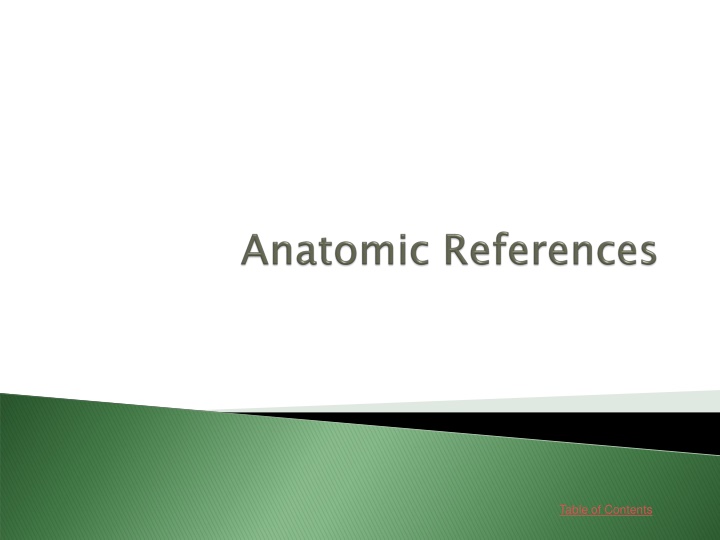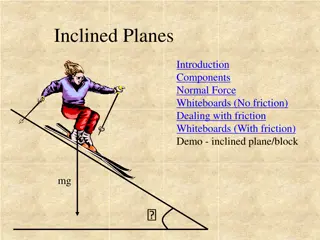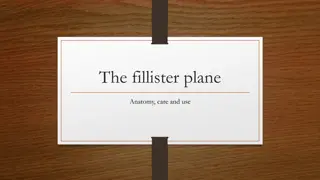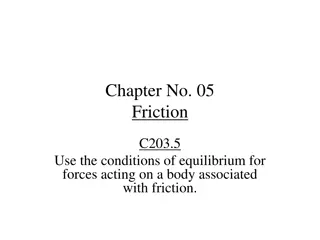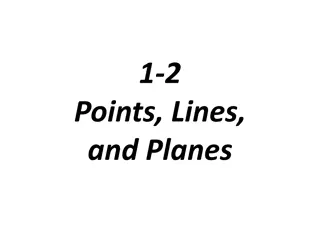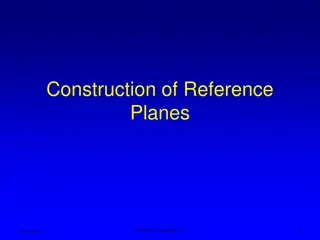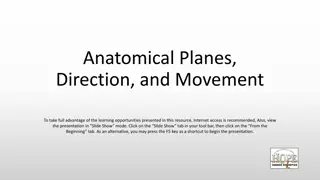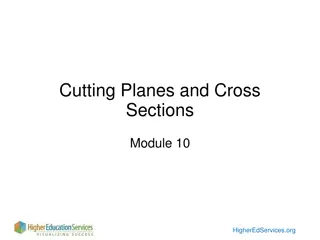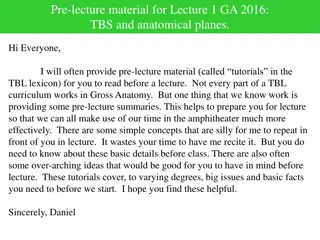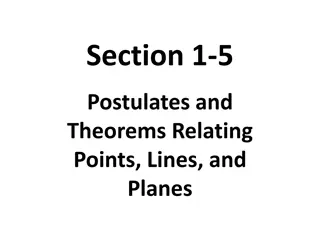Body Planes and Directions for Health Care Workers
Health care workers must grasp anatomical positions to effectively administer treatments, injections, and diagnoses. Learn about body planes - transverse, midsagittal, and frontal - and how they guide directional terminology for identifying body areas.
Download Presentation

Please find below an Image/Link to download the presentation.
The content on the website is provided AS IS for your information and personal use only. It may not be sold, licensed, or shared on other websites without obtaining consent from the author.If you encounter any issues during the download, it is possible that the publisher has removed the file from their server.
You are allowed to download the files provided on this website for personal or commercial use, subject to the condition that they are used lawfully. All files are the property of their respective owners.
The content on the website is provided AS IS for your information and personal use only. It may not be sold, licensed, or shared on other websites without obtaining consent from the author.
E N D
Presentation Transcript
Table of Contents Table of Contents
Lessons 1. Body Planes and Directions Go 2. Body Cavities Go TABLE OF CONTENTS Table of Contents Table of Contents
Health care workers need to be able to clearly identify areas of the body. They must do so in order to correctly apply treatments, injections, and diagnoses. Such directional terms are based on anatomical position the body is upright and facing forward, with the arms at the sides and the palms toward the front. anatomical position. In this position, Table of Contents Table of Contents
Body planes lines drawn through the body. They separate the body into sections and are used to create directional terms. Body planes are imaginary The three body planes are: Transverse Midsagittal Frontal Table of Contents Table of Contents
The transverse plane horizontal and divides the body into a top half and a bottom half. Body parts above other parts are called superior Body parts below other body parts are called inferior transverse plane is superior. inferior. Two other terms related to this plane also refer to direction. Cranial toward the head. Caudal toward the lower end of the spine or feet. Cranial refers to body parts Caudal refers to body parts Table of Contents Table of Contents
The midsaggital also known as the median plane or the midline. midsaggital plane plane is The midsaggital plane is vertical and divides the body into equal right and left halves. Body parts toward this plane are called medial Body parts away from this plane are called lateral medial. lateral. Table of Contents Table of Contents
The frontal plane known as the coronal plane. frontal plane is also The frontal plane is vertical. It divides the body into front and back sections. Body parts toward the front section are called ventral Body parts toward the back section are called dorsal ventral, or anterior. dorsal, or posterior. Table of Contents Table of Contents
Two other terms are used to describe the location of a body part in relation to the point of attachment, or point of reference. Body parts toward the point of attachment are called proximal Body parts distant from this point are called distal proximal. distal. Table of Contents Table of Contents
Body cavities within the body that contain vital organs. Body cavities are spaces The two major cavities in the body are the dorsal and ventral cavities. The dorsal cavity continuous cavity located on the back of the body. The ventral cavity located on the front side of the body. dorsal cavity is a long, ventral cavity is Table of Contents Table of Contents
The dorsal cavity is divided into two sections: The cranial cavity the brain. The spinal cavity the spinal cord. cranial cavity contains spinal cavity contains Table of Contents Table of Contents
The ventral cavity is divided into three sections: The thoracic cavity the trachea, esophagus, bronchi, lungs, heart, and major blood vessels. It is also known as the chest cavity. The abdominal cavity contains the stomach, small intestine, most of the large intestine, liver, gallbladder, pancreas, and spleen. The pelvic cavity the reproductive organs, bladder, and rectum. thoracic cavity contains abdominal cavity pelvic cavity contains Table of Contents Table of Contents
The orbital cavity the eye structures. orbital cavity contains The nasal cavity the parts that form the nose. nasal cavity contains The oral cavity cavity, contains the teeth and the tongue in the mouth. oral cavity, or buccal Table of Contents Table of Contents
Because the abdominal cavity is so large, it helps to divide it into regions. One method of division results in quadrants four regions: Right upper quadrant (RUQ) Left upper quadrant (LUQ) Right lower quadrant (RLQ) Left lower quadrant (LLQ) quadrants, or Table of Contents Table of Contents
Another method of dividing the abdominal cavity results in nine regions: Epigastric stomach Umbilical Hypogastric stomach Left Hypochondriac the ribs, left side Right Hypochondriac the ribs, right side Left Lumbar left side Right Lumbar right side Left Iliac side Right Iliac right side Epigastric above the Umbilical near the umbilicus Hypogastric below the Left Hypochondriac below Right Hypochondriac below Left Lumbar near the waist, Right Lumbar near the waist, Left Iliac near the hips, left Right Iliac near the hips, Table of Contents Table of Contents
